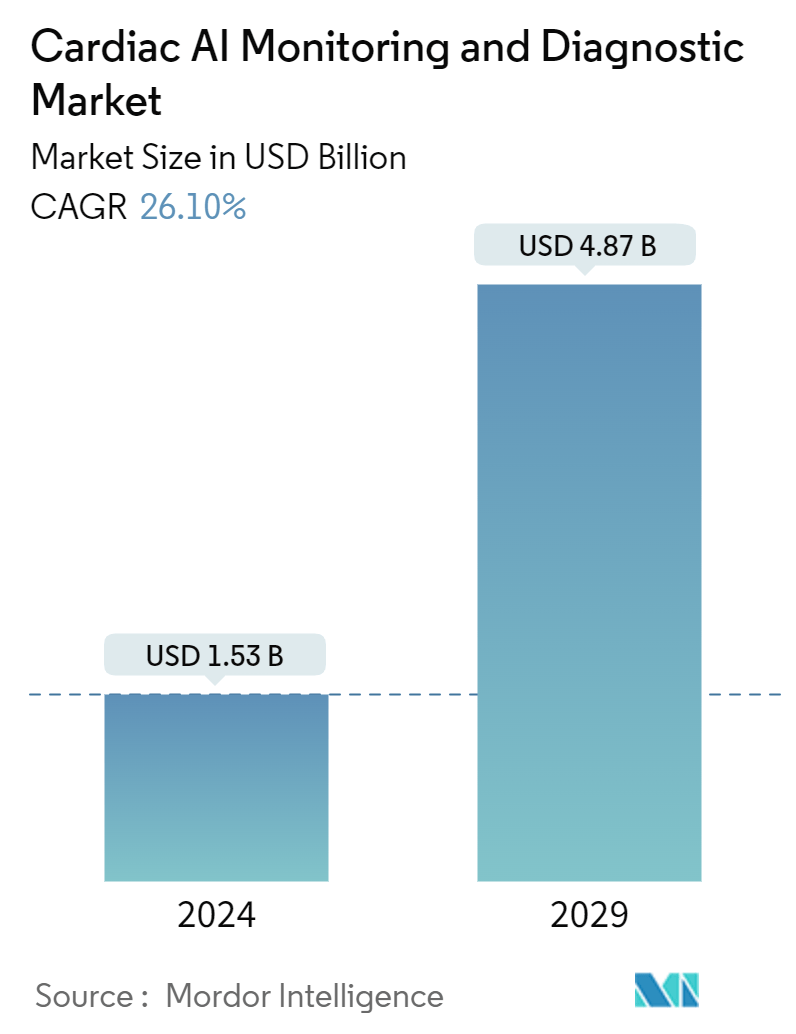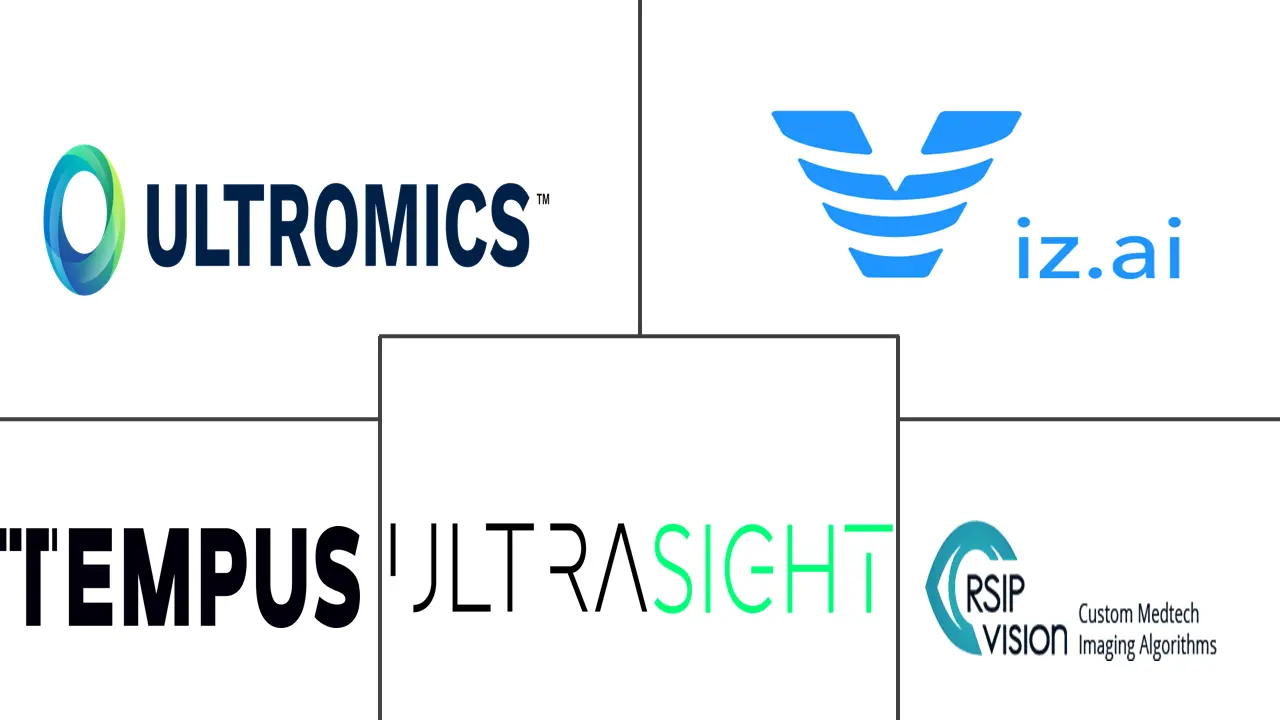Market Size of Cardiac AI Monitoring And Diagnostic Industry

| Study Period | 2019 - 2029 |
| Market Size (2024) | USD 1.53 Billion |
| Market Size (2029) | USD 4.87 Billion |
| CAGR (2024 - 2029) | 26.10 % |
| Fastest Growing Market | Asia Pacific |
| Largest Market | North America |
| Market Concentration | Medium |
Major Players
*Disclaimer: Major Players sorted in no particular order |
Cardiac AI Monitoring And Diagnostic Market Analysis
The Cardiac AI Monitoring And Diagnostic Market size is estimated at USD 1.53 billion in 2024, and is expected to reach USD 4.87 billion by 2029, growing at a CAGR of 26.10% during the forecast period (2024-2029).
The major factors driving the market are the rising prevalence of cardiovascular diseases, the demand for remote monitoring, and the increasing government initiatives for AI adoption.
The rising prevalence of cardiovascular diseases, coupled with the demand for remote monitoring, is expected to increase the demand for cardiac AI monitoring and diagnostics for the early detection of cardiovascular disease and efficient treatment. For instance, according to an article published in the Lancet in February 2024, atrial fibrillation (AF) is highly prevalent, with a lifetime risk of about one in three to five individuals after the age of 45 years. Projection studies reported that the prevalence of AF will rise to 15.9 million in 2050 in America and 17.9 million in 2060 in Europe. Hence, the rising prevalence of atrial fibrillation cases is expected to increase the demand for cardiac AI monitoring and diagnostic solutions, driving market growth over the forecast period.
Similarly, according to the data published by the Centers For Disease Control and Prevention in May 2024, every year, more than 795,000 people in the United States have a stroke. Every 40 seconds, someone in the United States has a stroke. Hence, the high prevalence of stroke is expected to increase the utilization of cardiac AI monitoring and diagnostic products for early diagnosis and treatment of stroke patients, driving market growth over the forecast period.
Furthermore, the increasing government initiatives and focus on precision medicine are expected to improve the adoption of AI technologies in the healthcare system, which is also expected to drive the market over the forecast period. For instance, in June 2023, the UK government provided around EUR 21 million (USD 23.4 million) to integrate artificial intelligence across the National Healthcare Services (NHS). This AI technology is used to diagnose patients more quickly for conditions such as cancers, strokes, and heart conditions. Hence, such government initiatives are expected to drive the market over the forecast period.
In conclusion, the rising prevalence of cardiovascular diseases, coupled with the demand for remote monitoring and increasing government initiatives and focus on precision medicine, is expected to drive the market over the forecast period. However, limited interoperability and integration, coupled with a lack of skilled professionals, is expected to restrain market growth over the forecast period.

